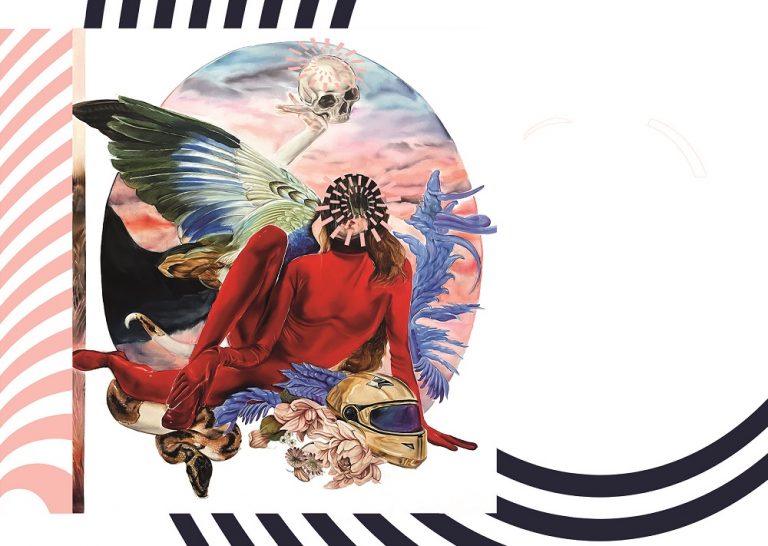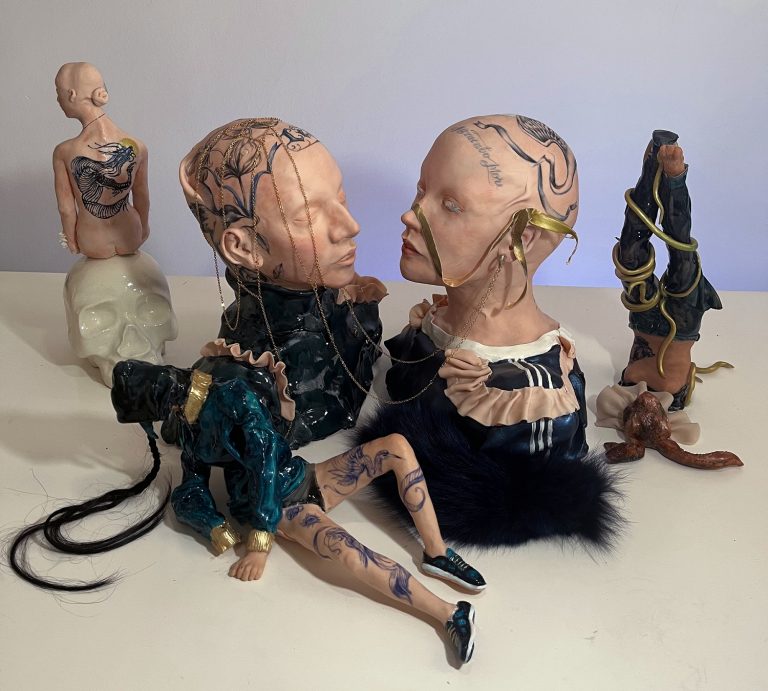updates
Rania Emmanouilidou
Mocking death


Angels and traps are the themes of Rania Emmanouilidou’s works showcased in the “Vanitas. Stories of the hereafter” exhibition, curated by Yannis Bolis and hosted at MOMus-Museum of Contemporary Art-Macedonian Museum of Contemporary Art and State Museum of Contemporary Art Collections.
Asked to reflect upon the existential issue raised by the exhibition, fifty-six visual artists attempted to give shape and meaning with regard to human vanity and the inevitability of death. “The thematic we were called to explore, vanity matched by death and its countless representations, is multifaceted and hard to be outlined in its vast totality, given the complexity of the question and the existence of groundbreaking works of art that have already contemplated on the same issues,” she mentions.
Even though this thematic is no unknown territory for her, as several of her works navigate through this field, she chose to take part in the exhibition with two new creations. A painting titled Angel, Angel, Down We Go Together and a sculpture titled The Trap.
Rania Emmanouilidou decided to make use of the symbolisms, but also distance herself from the solemnity of the early depictions of vanity; melancholy, tinta and the starkness of composition, loneliness and the inflexibility of death’s certainty, aiming to bring forth the aspect of coexistence and the triumph of life, “even in the distorted way we perceive it today,” as she
points out.
Her painting draws inspiration from the titular Morissey song, allegedly written for the actress Jennifer Jones, as its title alludes to the first movie she made following her suicide attempt. The song’s lyrics implore an “angel” struck by love not to commit suicide but choose life instead, even though exploited and abused by people.
In her work, Rania Emmanouilidou uses timeless symbols integrated in the modern era, with references to the world of fashion and advertising. The angel of death is transformed into a provocative woman, the knight’s helmet turns into a motorcycle helmet, dead animals are replaced by a living snake, dead flowers are plastic and the skull is illuminated by a triumphant light, dispersed all over the work. Through vivid and bright colors, she weaves an enticing ambiance, “mocking death, turning a blind eye to the menacing corners of the world and stressing the futile nature οf modern culture and symbol consuming,” as she explains.
In her second work, The Trap, she opts to explore the dynamics of duality and by extension of collectiveness, love and relations with regard to memory, as well as the question if and how all the above could exceed death. In this sculpture, she toys with words, aspiring to underline that the opposite of oblivion, inscribed on the skull through the form of a tattoo, is not identified with memory, but can be traced in the truth of memento mori.
In The Trap, through a series of similar references, she comments on the symbols of the marginal subculture elevated to the status of mainstream culture of our times, trivializing their dynamics and meaning. “We strive to delay and dismiss death by resorting to botox, self-improvement books and endless consumption, whereas the only thing we accomplish is to destroy the planet and precipitate death. We consume wars and genocides, disavowing everything through emojis,” she adds.
Interestingly enough, her next work will revolve around a similar theme, as the multifarious visual artist will undertake the set design and the costumes for a play written by Yorgos Veltsos and directed by Sofia Karakantza, which serves as an allegorical journey towards the final resting place, focused on the notions of memory, death and immortality. The play is expected to hit the stage of the National Theater of Northern Greece at the end of 2024.
